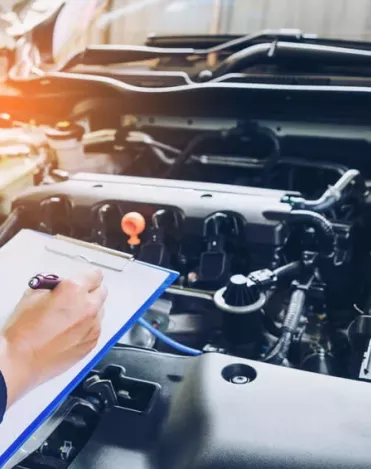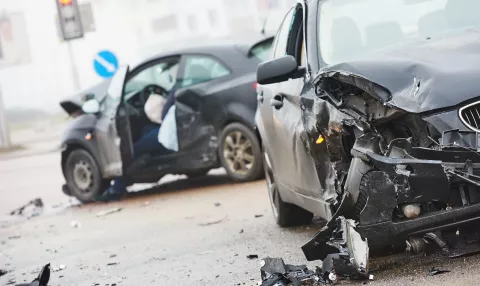Driving in monsoon: our expert tips to stay safe during the monsoon season
Monsoon season can be a dangerous time to be out on the road. With heavy rains, flooding and landslides, it is important to take extra care and precautions when driving in monsoon conditions. Here are our expert tips to help you stay safe on the road during the monsoon season.

How does monsoon affect roads?
Driving during the monsoon season can be extremely challenging due to the heavy rainfall and flooding that often occur. Roads are often inundated with rainwater, making them slippery and dangerous. Poor visibility due to fog and heavy rain also make it difficult to drive safely.
Monsoons can cause flooding, which can lead to road closures, and can also cause the roads to become slippery and dangerous. Additionally, the rain can cause potholes and other irregularities in the road surface, making it difficult to drive safely.
Additionally, the monsoon season brings with it an increased risk of landslides and road debris. Therefore, it is important to be extra cautious when driving during the monsoon season.
Our tips to drive safely during the monsoon season
The monsoon season can be a challenge for drivers. With the roads becoming slippery due to the rain, the chances of an accident are higher than usual. However, with the right precautions and driving techniques, you can stay safe during the monsoon season. Here are some tips to keep in mind when driving in India during the monsoon season.
Reduce your speed
One of the most important measures to take when driving in monsoon is to reduce your speed when driving in wet conditions. This will give you more time to react to any hazards that may be present and help you maintain control of your vehicle. Slowing down will also help you avoid hydroplaning, which can be dangerous when driving on wet surfaces.
Keep safety distances
During the monsoon season, you may encounter heavy rains. As the visibility is lowered, we recommend maintaining a safe distance between your car and the vehicle in front. This will give you time to react to any sudden changes in road conditions due to heavy rainfall or flooding. In case of emergency braking, keeping a sufficient safety distance will help to reduce the risk of accident.
Keep your headlights on
Seeing and being seen on the road: this is the main rule during heavy rain in the monsoon season. One of the most important safety measures to take is to keep your headlights on while driving. By switching on your headlights, you will make it easier for other drivers to see you and help prevent accidents caused by poor visibility. We advise you to keep your headlights on low beam, so that you don't blind the divers on the opposite side of the road. Always remember that high beams may be too strong for opposite drivers and reduce their visibility. Finally, if you pull over, turn on your hazard lights so that other drivers can clearly see that you are stopped.
Always have an emergency kit in your car
It is important to always have an emergency kit in your car during the rainy season in case of an unexpected breakdown or accident. This kit should include items such as a first aid kit, flashlights, blankets, and other essential items that can help you in an emergency situation. Also, don't hesitate to always have water and food such as power bars.
Fill up your fuel tank
Make sure to fill up your fuel tank before setting off. This will ensure that you don't run out of fuel on the road and have to look for a fuel station in the rain. In the event of traffic jams or an emergency, such as a breakdown, you will need the fuel to get to safety. Furthermore, it is also important to ensure that you have enough fuel to reach your destination without running out.
Our recommended checks before the monsoon seasons
Before the monsoon season arrives in India, it is important to make sure that your car is ready for the rains. So, it is essential to make sure that your car is in top condition. Here are our recommended checks that you should do before the monsoon season arrives.
Check your tyre tread
The first element we recommend you to check before the monsoon season are tyres. As they are the only element that links you car the road, having your tyres in good condition for wet conditions is imperative. Don't forget to check the tyre pressure levels (which can be found on the inside of the driver's door or on the fuel cap) to optimize road handling and grip.
Also, we recommend to check the tread of your tyres to ensure you have good grip when driving on wet roads. The tread on your tyres should be no less than 3mm deep for optimum performance and to avoid aquaplaning.
Check your brakes
One of the most important things to do before driving during the monsoon season is to check your brakes. Make sure to check your brakes regularly and have them serviced if necessary. Doing this will ensure that your brakes will be able to handle the wet roads and help you stay safe. Being able to brake efficiently during the rainy season is essential. This is why we recommend to have to brake pads and disks checked by your local Point S expert technician.
Check your windscreen wipers
Before you hit the road during the monsoon, it's important to check your windscreen wipers and make sure they are in good working condition. Replace them if they are worn or damaged, as they will be your first line of defense against the heavy rain. This will help ensure that your vision is not obstructed by the heavy rains. Additionally, make sure that your windshield is clean and free from any dirt or debris that could further hinder your visibility.
Check your air con system and windscreen defogging
To ensure a safe and comfortable ride, it is important to check your car’s air conditioning system and windscreen defogging system before you hit the road. Make sure that the air con system is working properly, and that the windscreen is free of any fogging or misting. This will enable you to have clear visibility and reduce the risk of accidents.
Check your headlights
Finally, we recommend you to check that all your lights (headlights, taillights, hazard lights and indicators) are in good working order and that you have a full set of spare bulbs. This will enable you to have a better visibility level and view during the monsoon season. Also, other drivers will see you better if your headlights are working perfectly.
Should I drive in flooded streets?
Flooded streets can pose a serious risk to drivers. When faced with a flooded street, it is important to remember that it is best to turn around and find an alternate route rather than attempting to cross it. Even if you think the water is shallow, it can be difficult to judge how deep it is and if the road is safe to cross. Driving in water is never a good nor a safe option!
With heavy rain and flooded streets, it is important to remember certain safety precautions when driving in such conditions. Driving through large puddles or a waterlogged street can cause serious damage to your car. Precautions should be taken before attempting to drive through flooded areas. If you encounter such a situation, stay in lower gear and drive slowly while revving your engine. However, we do not recommend to take a flooded road.


